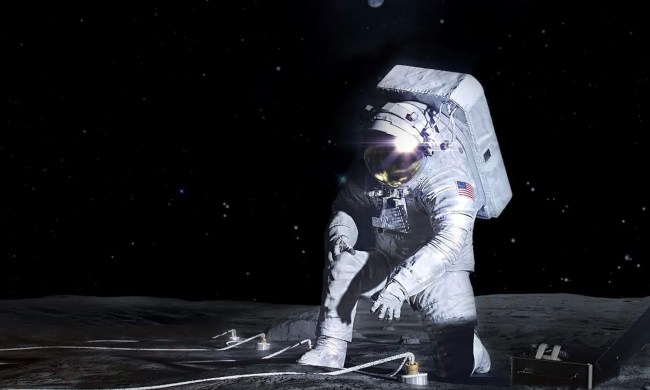
The moon could soon be visited by a jolly round robotic friend. The Japanese Space Agency, JAXA, has announced plans to build a transforming lunar rover to explore the moon ahead of its planned crewed mission there.
To travel across the lunar regolith — the dusty, soil-like substance which covers the moon’s surface — the rover will be able to transform from its ball-like travel form, designed to be as compact and efficient as possible, into a delightfully named “running form” which it will use to move around the lunar environment. It will take pictures of the surface to learn more about the topography and the qualities of the regolith, to help engineers design a more maneuverable crewed rover.
The round rover will be just a few inches across, or a bit larger than a tennis ball, and will weigh around 250 grams (8.8 ounces). To pack all of the required technology into this tiny form, JAXA is partnering with the Tomy toy company and Doshisha University, with technology contributed by Sony as well.
JAXA says it aims to launch the mini rover in 2022, to be followed by a much larger rover in 2029. This larger rover will be pressurized and crewed, allowing astronauts to cover larger areas of the moon’s surface and explore more widely. JAXA will also be working alongside NASA for its Artemis mission to the moon.
“In 2019, the Government of Japan decided to participate in the Artemis program which was proposed by the U.S.,” said JAXA Vice President Hiroshi Sasaki. “Based on the decision, JAXA has been promoting mission development and system studies on international space exploration targeting the Moon and Mars by gathering Japanese technologies and knowledge.
“In particular, the crewed pressurized rover will play an important role in developing mobility on the lunar surface for sustainable exploration activities. The data on the lunar surface can be obtained by utilizing the transformable lunar robot which is a production of the Space Exploration Innovation Hub and the lunar landing missions of the commercial company. By making the best use of the data, we will surely proceed with the study on the crewed pressurized rover”



